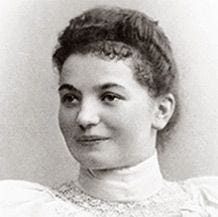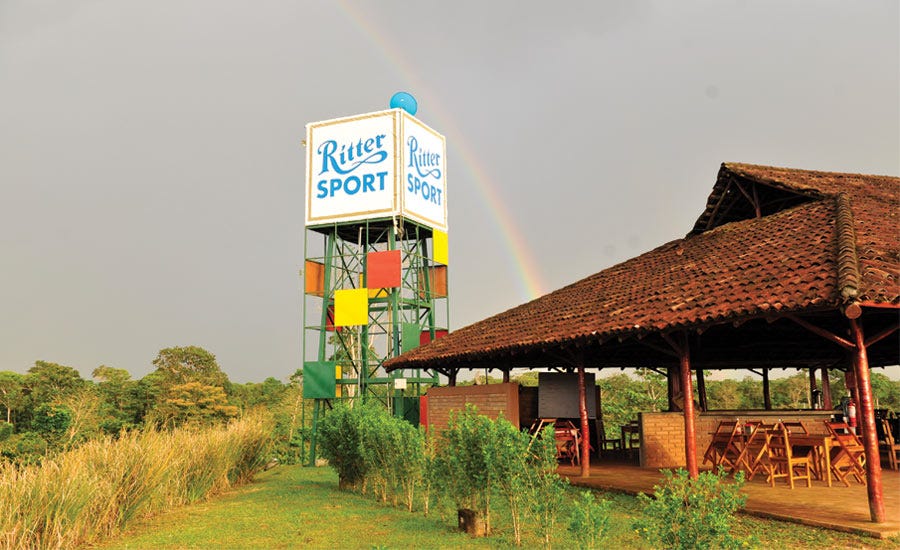Been a while since we welcomed all of our new readers. Willkommen! It is so exciting to see our readership grow week to week. We love to hear from you, so let us know if there is anything you would like to see featured in the newsletter. If you’d like to support us, the best way is to send our articles around to like-minded friends who would love to join our community.
This week’s topic was recommended by friends of Considered (Hi, Derek and Carmen!) who, upon recommending, had no idea how deep this one goes. It has it all. A husband and wife team. 100+ years of history. A company with one of the worst slogans I’ve ever seen. And oh so many squares. A delicious combination.
One of the biggest surprises for me as a “sweets man” (and also a “savoury man” and “carbs man”) was how many of my favourite confectionaries are manufactured by multi-generational family businesses. Haribo, Jelly Belly, Ferrero Rocher... all family-owned businesses. Even The Hershey Company has the majority of their voting stock controlled by the Hershey Trust.
Some great lessons I’ve already learned so far:
You, the readers, are a great source of inspiration! Feel free to reply with your story ideas and you may just see them pop up in a future newsletter.
One of the keys to intergenerational wealth is candy.
Design
The company that would eventually come to be known as Ritter Sport was founded in 1912 by husband and wife Alfred E. Ritter and Clara Ritter in Stuttgart, Germany. This caught my attention, as female co-founders were highly uncommon at the time. When I asked Ritter Sport about this, they went back to the archives and dug out more info for me! What great customer service. Turns out, Clara Ritter actually owned the confectionery store as a sole proprietor before her marriage, and Alfred Ritter was a self-employed confectioner. By the time they purchased the building that became their headquarters, both of them were listed as purchasers.
This is especially impressive because German women were not even allowed to vote until 1919. The 1900 German Civil Code did not provide property rights for women, and the rights their counterparts in England and France had received in the 1800s did not arrive in Germany until post WWII. There is not much more information about Clara Ritter available, but her life sounds fascinating.
In 1932, Clara had grown frustrated with how traditional chocolate bars snapped when carried in your pocket, specifically in the pocket of a sport coat. I can empathize with a woman who was always holding. She came up with the classic square design that Ritter are known for: a 4x4 chocolate square that contained the same amount of chocolate as a standard bar, but was easy to transport in your pocket. This transmogrification became the hallmark of their brand.
There is something so incredibly beautiful and simple about this. They took something with a standard shape and decided not to be constrained by the limits of the expected form. One can draw clear parallels to the early 1960s when artists like Frank Stella asked “why does an art canvas have to be a rectangle?”
Marli Hoppe-Ritter, a 3rd generation family member and square-lover who took ownership of the Ritter company in the 1970s, strongly disagreed with Stella’s provocation, and as a retort has amassed a collection of over 1200 art works “in the field of twentieth and twenty-first century geometrical abstraction,” which is code for paintings of SQUARES. She has so many pieces of square art that she built a private museum at the company’s chocolate-scented headquarters, in the German town of Waldenbuch that is also - you guessed it - square-shaped.
This woman has never seen a 90 degree angle she didn’t want to own! This square-centric ethos is encapsulated in the Ritter Sport slogan: Square. Practical. Good. In their honour we have changed the Considered slogan to: Saturdays. Educational. Newsletter.

Innovation
From 1935-1950 Ritter Sport shut down production of chocolate products because Alfred Ritter refused to join the Nazi party and was therefore denied access to importing the raw cocoa he needed to make bars. Like De Cecco Sr. (profiled in a previous issue of Considered: De Cecco Pasta), Alfred Ritter was appointed mayor of his town after WWII because of his refusal to join the Nazi party.
This raw material insecurity led to one of the first innovations at Ritter: direct sourcing. A lot of specialty chocolate is manufactured by a few large companies (Valrhona is one of the most well-known) who do the hard work of converting the cocoa pods into meltable wafers of chocolate. Like coffee or wine, the flavour of the chocolate is directly influenced by the variety as well as where the cocoa is grown. For example, Nicaraguan cocoa is nuttier than Peruvian, which can be sharper. In 1990, Ritter established direct relationships with farmers in Nicaragua, Peru and Ghana to supply its factories. In 2012, they took it one step further and developed a cocoa plantation in Nicaragua that can produce over 50M Cocoa pods a year. Each Ritter Sport bar requires the equivalent of 1 cocoa pod of raw material.
The second major innovation is the range of flavour varieties. Like Japanese Kit Kats, you can get Ritter Sport in some strange flavours - there are almost 40 current varieties according to Wikipedia! In addition to their “standard” offerings, Ritter Sport is known for its seasonal rare releases, from alpine milk to marzipan to cornflake fillings.
Sustainability
There are two sustainability stories here: energy consumption and materials.
On the energy side, Ritter is such a pioneer in the use of solar energy that they spun off a well-regarded (and one of Europe’s largest) solar equipment manufacturer, Ritter Energie.
On the materials side, they were an early supporter of organic agriculture (dating back to 1990, before organic became more widely practiced). They paid a consistent premium, as much as 20%, to producers that could provide certified organic cocoa. This premium encouraged many local farmers to convert to organic.
Interestingly, in 2017 Ritter abandoned organic requirements and switched to a sustainable, or “Fair Trade”, certification. Sustainable or fair trade allows for the use of chemical pesticides in growing the cocoa. It takes years to switch from conventional or sustainable to an organic certification, and only one spray to go back. Ritter says that customers did not show a special interest in their organic line, so they have decided not to invest in it.
Value
A standard 100g Ritter Sport bar retails for $2.50. The perfect combination of flavour and value. Chocolate is a category where there are many chances to shop your values at an affordable price point. For less than a dollar more, organic and fair trade or direct trade are easy to find.
Fair Trade Certified means that the raw ingredients are sourced from an export collective that is responsible for ensuring that its members are producing according to their standards (no forced labour, etc.). Direct Trade is when the raw ingredients are purchased directly from the farmer and the purchaser takes that onus on themselves.
Chocosol uses direct trade to support Mexican farmers. AlterEco is a widely available brand that is also a B Corp, USDA Organic Certified and only uses fair trade ingredients. Most of this information is available on the package, so take a look as you check out!
PS: My parents, loyal readers, once took me to the Jelly Belly factory and it was one of the greatest experiences of my young life. To put this in perspective, we were a family that travelled all around the world yet walking around that factory, eating all the oddly shaped and oddly flavoured reject beans (called “belly flops” by the tour guide) that I could stuff into my face changed me. I became a card carrying member of the Jelly Belly Fan Club and continued to enjoy them until a cinnamon allergy made eating Jelly Belly candy as dangerous as playing Russian roulette!











